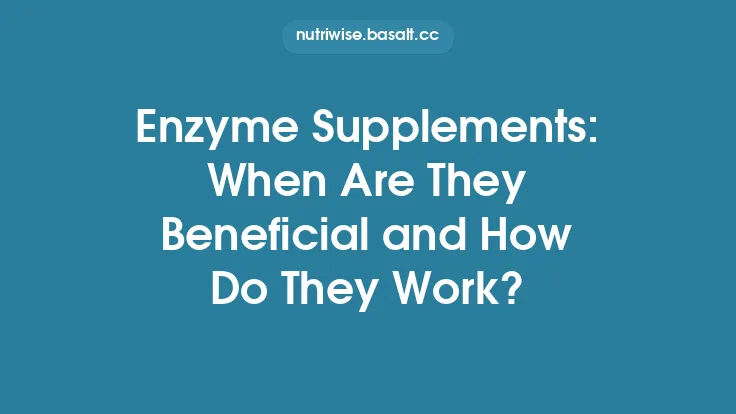Sugar consumption has been on a steady rise for decades, and with it, the market for alternatives that promise the same sweetness with fewer calories or a gentler impact on blood sugar. From tabletop packets to baked‑good ingredients, sugar substitutes have become a staple in many pantries. Yet the flood of claims—“they’re all natural,” “they won’t affect your weight,” “they’re completely safe”—can be overwhelming. This article cuts through the hype, explaining what sugar substitutes actually are, how they work in the body, and what the science says about their safety compared with regular sugar.
Types of Sugar Substitutes
Sugar substitutes fall into two broad categories: nutritive and non‑nutritive.
| Category | Examples | Sweetness Relative to Sucrose | Caloric Value (per gram) |
|---|---|---|---|
| Nutritive (provides calories) | Sugar alcohols (xylitol, erythritol, sorbitol, maltitol), honey, maple syrup, agave nectar, coconut sugar, stevia leaf (when used as a bulk sweetener) | 0.5–2× (sugar alcohols) ; 1–2× (natural syrups) | 0.2–4 kcal (sugar alcohols) ; 3–4 kcal (natural syrups) |
| Non‑nutritive (high‑intensity, negligible calories) | Aspartame, sucralose, saccharin, acesulfame‑K, neotame, advantame, stevia‑derived rebaudioside A, monk fruit mogrosides | 200–350× (most) | <0.5 kcal (practically zero) |
Nutritive substitutes still contribute energy, but many have a lower glycemic impact or fewer calories per gram than sucrose. Non‑nutritive substitutes are many thousands of times sweeter than sugar, so only minute amounts are needed, resulting in virtually no caloric contribution.
How Sweetness Is Detected: The Science Behind the Taste
All sweeteners, whether sugar or an artificial compound, activate the same family of taste receptors—T1R2/T1R3—on the tongue. When a molecule binds to these receptors, a cascade of signals travels to the brain, which interprets the sensation as “sweet.” The potency of a sweetener is determined by how strongly and efficiently it binds to these receptors.
- High‑intensity sweeteners (e.g., sucralose) have a molecular structure that fits the receptor pocket exceptionally well, triggering a robust signal at concentrations far lower than sucrose.
- Sugar alcohols mimic the shape of glucose but are metabolized more slowly, leading to a weaker, longer‑lasting sweet signal.
- Natural high‑potency extracts like stevia’s rebaudioside A and monk fruit’s mogrosides interact with the same receptors but also engage additional pathways that may influence satiety hormones.
Understanding this mechanism is crucial because the body’s metabolic response (insulin release, glucose uptake) is largely driven by the post‑oral effects of the molecule, not just the taste perception.
Regulatory Oversight and Safety Assessments
Before a sweetener reaches grocery shelves, it undergoes rigorous evaluation by agencies such as the U.S. Food and Drug Administration (FDA), the European Food Safety Authority (EFSA), and the Joint FAO/WHO Expert Committee on Food Additives (JECFA). The key steps include:
- Toxicological Testing – acute, sub‑chronic, and chronic studies in rodents to assess carcinogenicity, reproductive toxicity, and organ‑specific effects.
- Metabolic Studies – tracing how the compound is absorbed, distributed, metabolized, and excreted (ADME).
- Establishment of an Acceptable Daily Intake (ADI) – a safety margin calculated as the No‑Observed‑Adverse‑Effect Level (NOAEL) divided by a 100‑fold uncertainty factor. For example:
- Aspartame: ADI = 50 mg/kg body weight (U.S.) / 40 mg/kg (EU)
- Sucralose: ADI = 15 mg/kg
- Stevia (rebaudioside A): ADI = 4 mg/kg
- Post‑Market Surveillance – monitoring adverse event reports and conducting periodic re‑evaluations as new data emerge.
All sweeteners currently approved for use in the United States and the European Union have been deemed safe within their ADI limits. Importantly, the ADI is not a target intake; it represents a level far above typical daily consumption.
Metabolic Effects Compared with Sucrose
| Parameter | Sucrose (table sugar) | Sugar Alcohols | Non‑nutritive Sweeteners |
|---|---|---|---|
| Glycemic Index (GI) | 65 (moderate) | 0–35 (varies) | 0 (no impact) |
| Insulin Response | Moderate rise | Minimal to none | None |
| Caloric Contribution | 4 kcal/g | 0.2–4 kcal/g | <0.5 kcal/g |
| Effect on Gut Microbiota | May promote growth of saccharolytic bacteria | Fermentable (e.g., xylitol) → gas, short‑chain fatty acids | Generally non‑fermentable; some (e.g., sucralose) may alter microbiome composition in high doses |
- Blood Sugar: Non‑nutritive sweeteners do not raise blood glucose because they are either not absorbed (e.g., sucralose) or are metabolized to non‑glucose end products (e.g., erythritol is excreted unchanged). Sugar alcohols have a modest impact; erythritol has a GI of 0, while maltitol’s GI is around 35.
- Satiety and Energy Balance: The evidence is mixed. Some short‑term studies show reduced caloric intake when sugar is replaced with high‑intensity sweeteners, while others report compensatory eating later in the day. Long‑term randomized trials generally demonstrate modest weight‑loss benefits when sweeteners replace added sugars in a calorie‑controlled diet.
- Dental Health: Unlike sucrose, most sugar alcohols (especially xylitol) are not fermentable by oral bacteria, reducing the risk of cavities. Non‑nutritive sweeteners are also non‑cariogenic.
Potential Health Benefits
- Weight Management: By providing sweetness without the associated calories, substitutes can help create a negative energy balance when used to replace sugary beverages or desserts.
- Diabetes Control: For individuals with insulin resistance or type 2 diabetes, non‑nutritive sweeteners allow enjoyment of sweet foods without triggering hyperglycemia.
- Dental Protection: Xylitol, in particular, has been shown to reduce *Streptococcus mutans* levels and promote remineralization of enamel.
- Reduced Risk of Metabolic Syndrome: Some epidemiological data suggest lower prevalence of metabolic syndrome components among high‑intensity sweetener users, though causality remains uncertain.
Potential Risks and Ongoing Controversies
| Issue | Evidence Summary |
|---|---|
| Gastrointestinal Distress | Sugar alcohols (especially sorbitol and maltitol) can cause bloating, flatulence, and osmotic diarrhea when consumed in excess. |
| Phenylalanine Sensitivity | Aspartame hydrolyzes to phenylalanine; individuals with phenylketonuria (PKU) must avoid it. |
| Potential Metabolic Effects | Some animal studies have linked high doses of certain sweeteners (e.g., saccharin) to altered glucose tolerance, but human data are inconclusive. |
| Microbiome Alterations | High chronic intake of sucralose and saccharin has been associated with shifts in gut bacterial composition in a subset of people, though clinical significance is still under investigation. |
| Allergic Reactions | Rare cases of hypersensitivity to specific sweeteners (e.g., sucralose) have been reported. |
| Long‑Term Safety Gaps | While regulatory bodies consider current data sufficient, the relatively recent introduction of newer compounds (e.g., advantame) means long‑term human data are still accruing. |
Overall, the consensus among major health organizations is that moderate consumption of approved sweeteners is safe. The key is to avoid excessive reliance on any single additive and to consider overall dietary quality.
Practical Guidance for Consumers
- Read the Ingredient List – Look for familiar names (e.g., erythritol, stevia, sucralose). If you’re sensitive to a particular sweetener, you can now identify it quickly.
- Mind the Serving Size – A “packet” of tabletop sweetener may contain a fraction of the ADI, but a large volume of diet soda could approach the upper limit if consumed several times daily.
- Match the Sweetener to the Application –
- Baking: Use sugar alcohols (e.g., erythritol) or blends that retain bulk and browning properties.
- Beverages: High‑intensity sweeteners (e.g., sucralose, stevia) work well because only a tiny amount is needed.
- Dental Products: Xylitol is a good choice for chewing gum or toothpaste.
- Consider Whole‑Food Sweeteners – If you prefer “natural,” options like ripe fruit, dates, or small amounts of honey can provide sweetness along with fiber, vitamins, and minerals.
- Track Your Intake – For individuals with diabetes or those monitoring weight, keeping a simple log of sweetener‑containing foods can help ensure you stay within reasonable limits.
- Stay Informed – New research emerges regularly. Reputable sources such as the FDA, EFSA, and peer‑reviewed nutrition journals provide updates on safety evaluations.
Emerging Research and Future Directions
- Novel Plant‑Derived Sweeteners: Researchers are isolating high‑potency compounds from tropical plants (e.g., brazzein from *Pentadiplandra brazzeana*) that may offer a clean label and minimal after‑taste.
- Personalized Sweetener Responses: Early studies suggest genetic variations in taste receptor genes (e.g., *TAS1R2*) influence how individuals perceive sweetness and may affect metabolic outcomes. Future nutrition plans could tailor sweetener choices to a person’s genotype.
- Hybrid Sweetener Systems: Combining low‑calorie sweeteners with small amounts of sugar or sugar alcohols can improve texture and reduce after‑taste, expanding their use in processed foods.
- Sustainability Considerations: Production methods for some high‑intensity sweeteners (e.g., stevia extraction) are being optimized to lower water usage and carbon footprints, aligning with broader environmental goals.
In summary, sugar substitutes encompass a diverse toolbox of compounds that can reduce caloric intake, lower glycemic impact, and protect dental health when used wisely. Regulatory agencies worldwide have vetted the currently approved sweeteners, establishing safety thresholds that far exceed typical consumption patterns. While certain individuals may experience gastrointestinal discomfort or have specific medical conditions (such as PKU), the bulk of scientific evidence supports the conclusion that approved sugar substitutes are generally safer than consuming equivalent amounts of added sugar, especially for weight management and blood‑sugar control. As with any dietary component, the best approach is moderation, informed choice, and a focus on overall dietary quality rather than reliance on a single “miracle” ingredient.





